EEStor is the urban legend of a startup that is said to be building a supercapacitor material that would store more energy and charge and discharge faster than previous materials by a factor of ten. If true, it could change the technology of electric vehicle charging and utility-scale energy storage.
We've made repeated attempts to contact the company and its CEO, Dick Weir, to no avail. Here is some of our EEStor coverage from last year, which includes a musical lament. The firm's website is no longer online and the usual fevered musings of the EEStor blogosphere have slowed.
Here's an abbreviated timeline of the firm's financial and partnership activity:
- Kleiner Perkins invested several million in EEStor in 2005. They don't admit to the investment on their website.
- ZENN Motors, a Canadian EV manufacturer, invested $2.5 million in EEStor in 2007.
- ZENN invested another $5 million for a 10.7% stake in 2009. ZENN is publicly held but barely alive as a going concern.
- Lockheed-Martin signed an agreement with EEStor for the rights to integrate and market EESU units in military and security applications but did not invest any money.
A source sent me some documents from an FOIA request from the Air Force Research Lab (AFRL) at Kirtland. They seem to indicate that the AFRL is puzzled over EEStor's story and unwilling to be associated with the firm. The redacted documents follow. Note the comment that EEStor is "full of it."
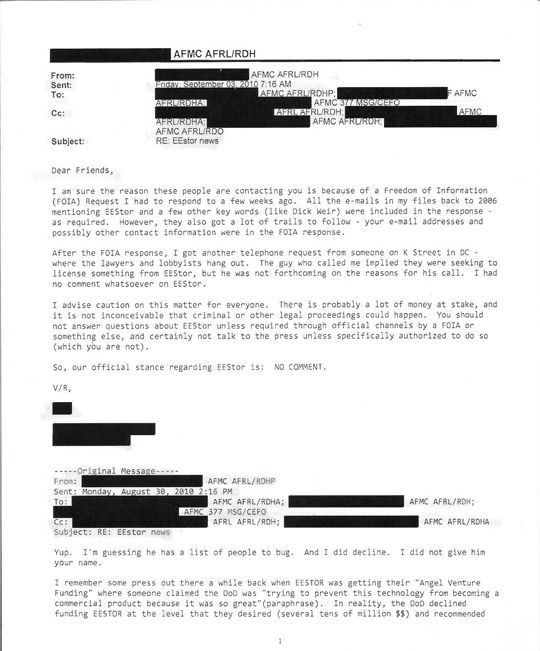
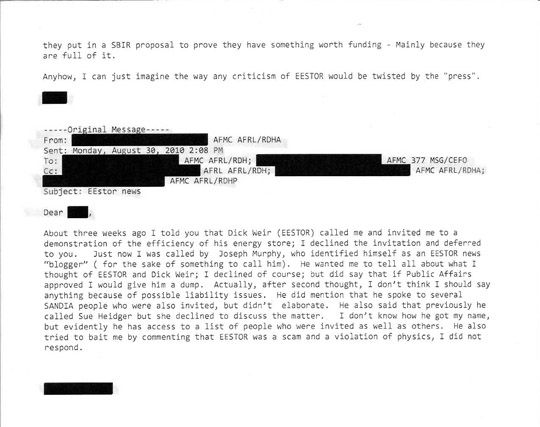

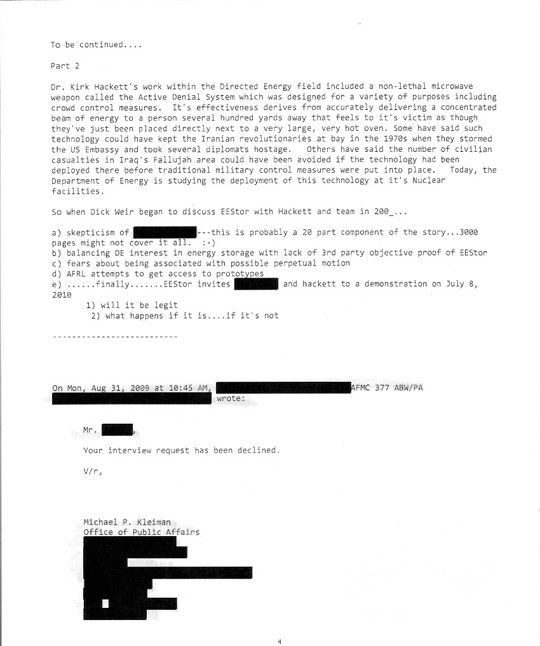
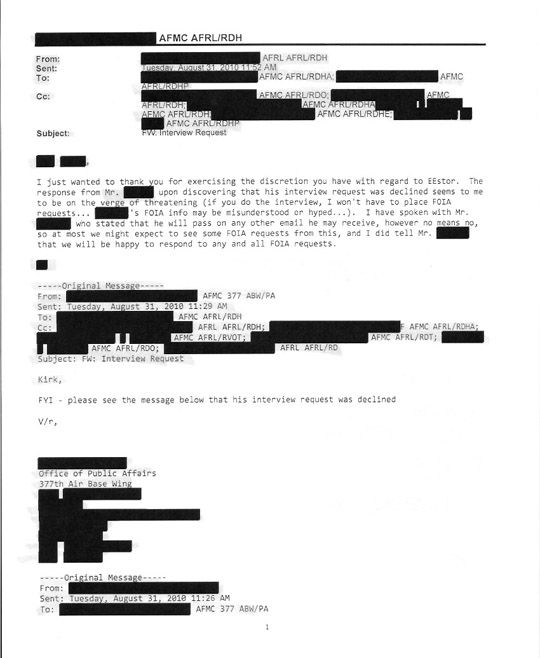
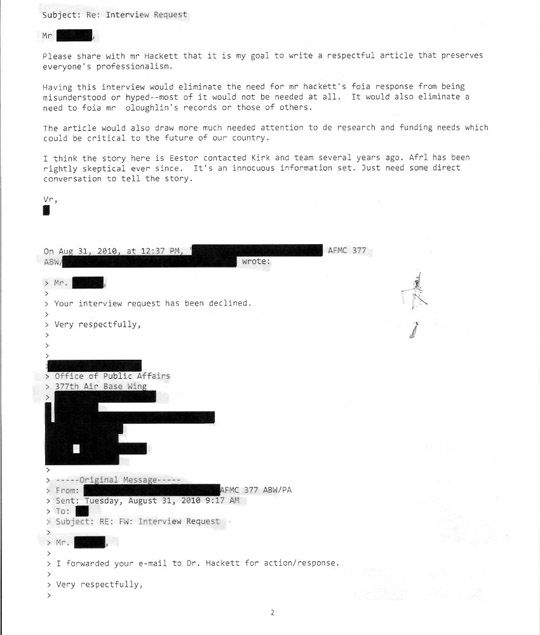
We report extensively on energy storage companies at Greentech Media. Here's a recent overview.



